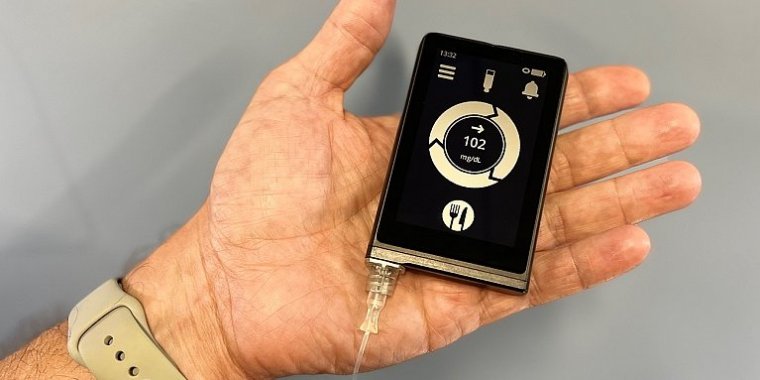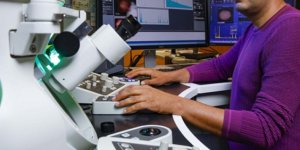| News / Science News |
Bionic pancreas improves type 1 diabetes management compared to standard insulin delivery methods
A device known as a bionic pancreas, which uses next-generation technology to automatically deliver insulin, was more effective at maintaining blood glucose (sugar) levels within normal range than standard-of-care management among people with type 1 diabetes, a new multicenter clinical trial has found.

iLet bionic pancreas device. Photo: Beta Bionics
Automated insulin delivery systems, also called artificial pancreas or closed-loop control systems, track a person’s blood glucose levels using a continuous glucose monitor and automatically deliver the hormone insulin when needed using an insulin pump.
These systems replace reliance on testing glucose level by fingerstick, continuous glucose monitor with separate insulin delivery through multiple daily injections, or a pump without automation.
Compared to other available artificial pancreas technologies, the bionic pancreas requires less user input and provides more automation because the device’s algorithms continually adjust insulin doses automatically based on users’ needs.
Users initialize the bionic pancreas by entering their body weight into the device’s dosing software at the time of first use.
Users of the bionic pancreas also do not have to count carbohydrates, nor initiate doses of insulin to correct for high blood glucose. In addition, health care providers do not need to make periodic adjustments to the settings of the device.
“Keeping tight control over blood glucose is important in managing diabetes and is the best way to prevent complications like eye, nerve, kidney, and cardiovascular disease down the road," said Dr. Guillermo Arreaza-Rubín, director of NIDDK’s diabetes technology program.
“The bionic pancreas technology introduces a new level of ease to the day-to-day management of type 1 diabetes, which may contribute to improved quality of life.”
The 13-week trial, conducted at 16 clinical sites across the United States, enrolled 326 participants ages 6 to 79 years who had type 1 diabetes and had been using insulin for at least one year.
Participants were randomly assigned to either a treatment group using the bionic pancreas device or a standard-of-care control group using their personal pre-study insulin delivery method.
All participants in the control group were provided with a continuous glucose monitor, and nearly one-third of the control group were using commercially available artificial pancreas technology during the study.
In participants using the bionic pancreas, glycated hemoglobin, a measure of a person’s long-term blood glucose control, improved from 7.9% to 7.3%, yet remained unchanged among the standard-of-care control group.
The bionic pancreas group participants spent 11% more time, approximately 2.5 hours per day, within the targeted blood glucose range compared to the control group.
These results were similar in youth and adult participants, and improvements in blood glucose control were greatest among participants who had higher blood glucose levels at the beginning of the study.
“Our observation that this system can safely improve glucose control to the degree we found, and do so despite requiring much less input from users and their health care providers, has important implications for children and adults living with diabetes,” said Dr. Steven Russell, study chair, associate professor of medicine at Harvard Medical School, and staff physician at the Massachusetts General Hospital in Boston.
Hyperglycemia, or high blood glucose, caused by problems with insulin pump equipment, was the most frequently reported adverse event in the bionic pancreas group.
The number of mild hypoglycemia events, or low blood glucose, was low and was not different between the groups.
The frequency of severe hypoglycemia was not statistically different between the standard of care and bionic pancreas groups. (National Institutes of Health)
YOU MAY ALSO LIKE





